The most well-known examples are probably the issues struck by Julius Caesar during the Gallic Wars, and the legionary denarii struck by Marcus Antonius.
Modern location:
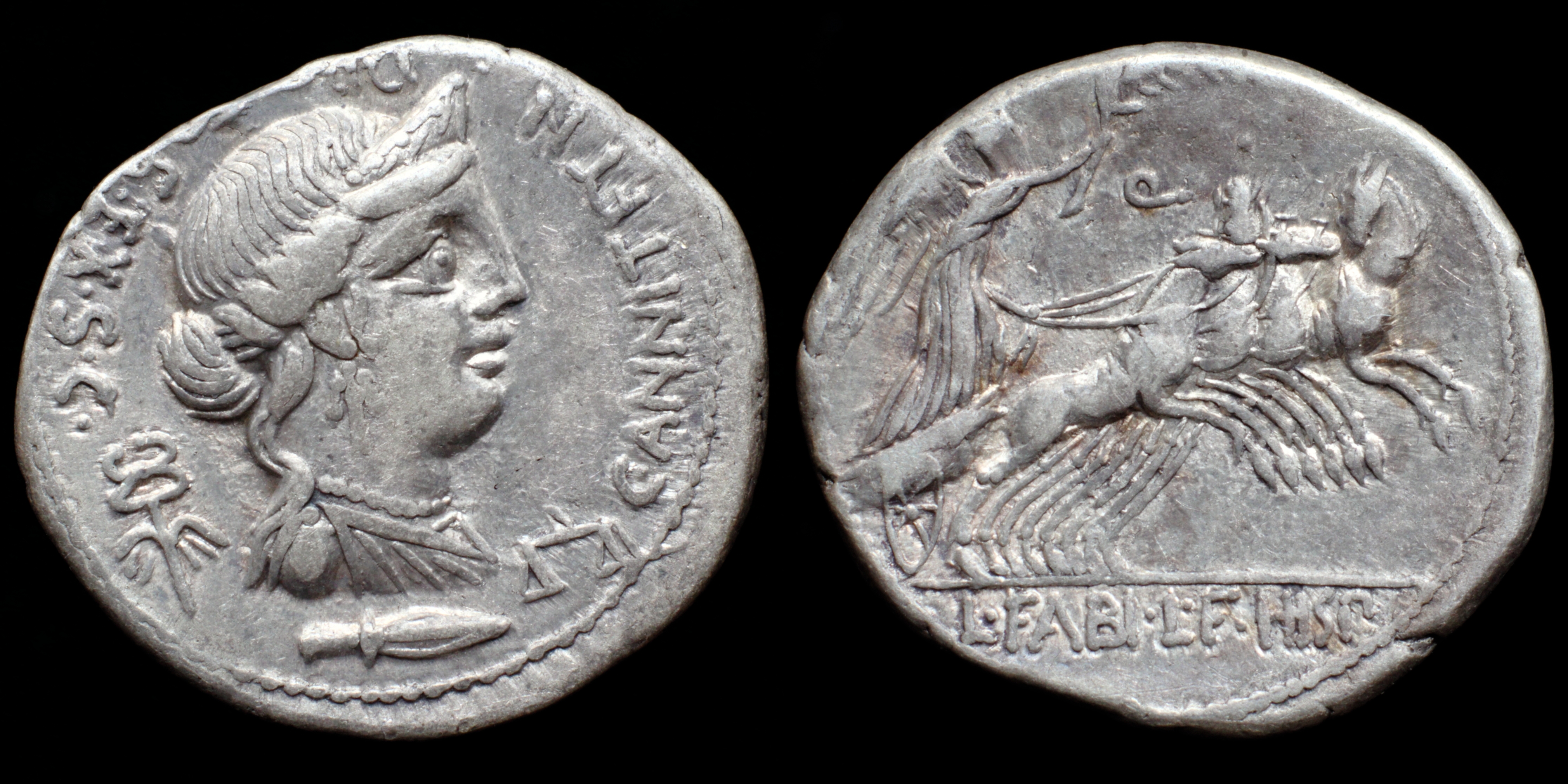
Reverse: Victory in quadriga right, holding palm branch and reins, Q / L·FABI·L·F·HISP
Die Orientation: -
Weight: 3.7 g
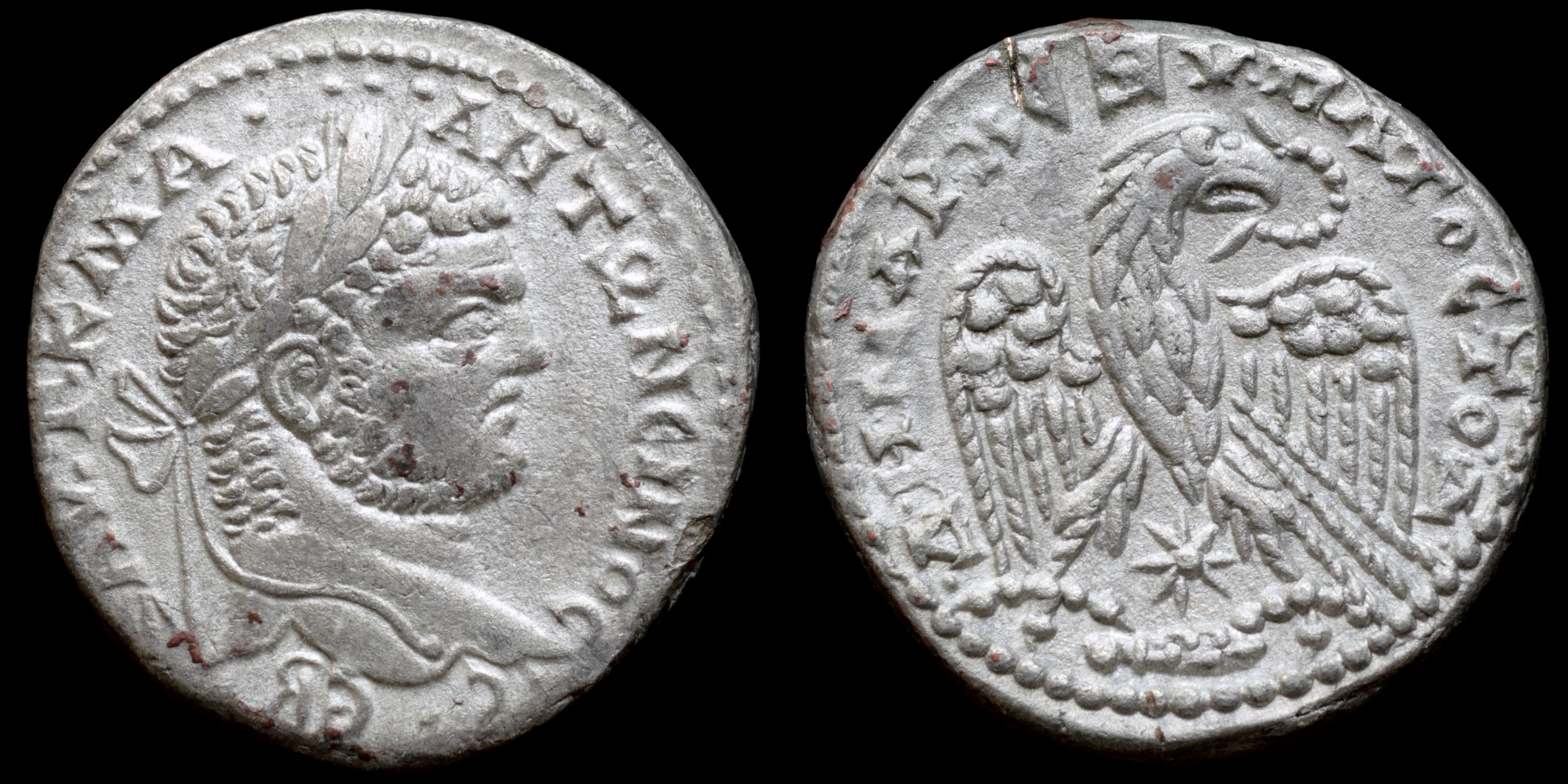
Reverse: eagle facing, head lright, wreath in beak star above small club below; 'Δ'HMAPX EΞ·VΠATOC·TO'Δ'
Die Orientation: -
Weight: 12.2 g
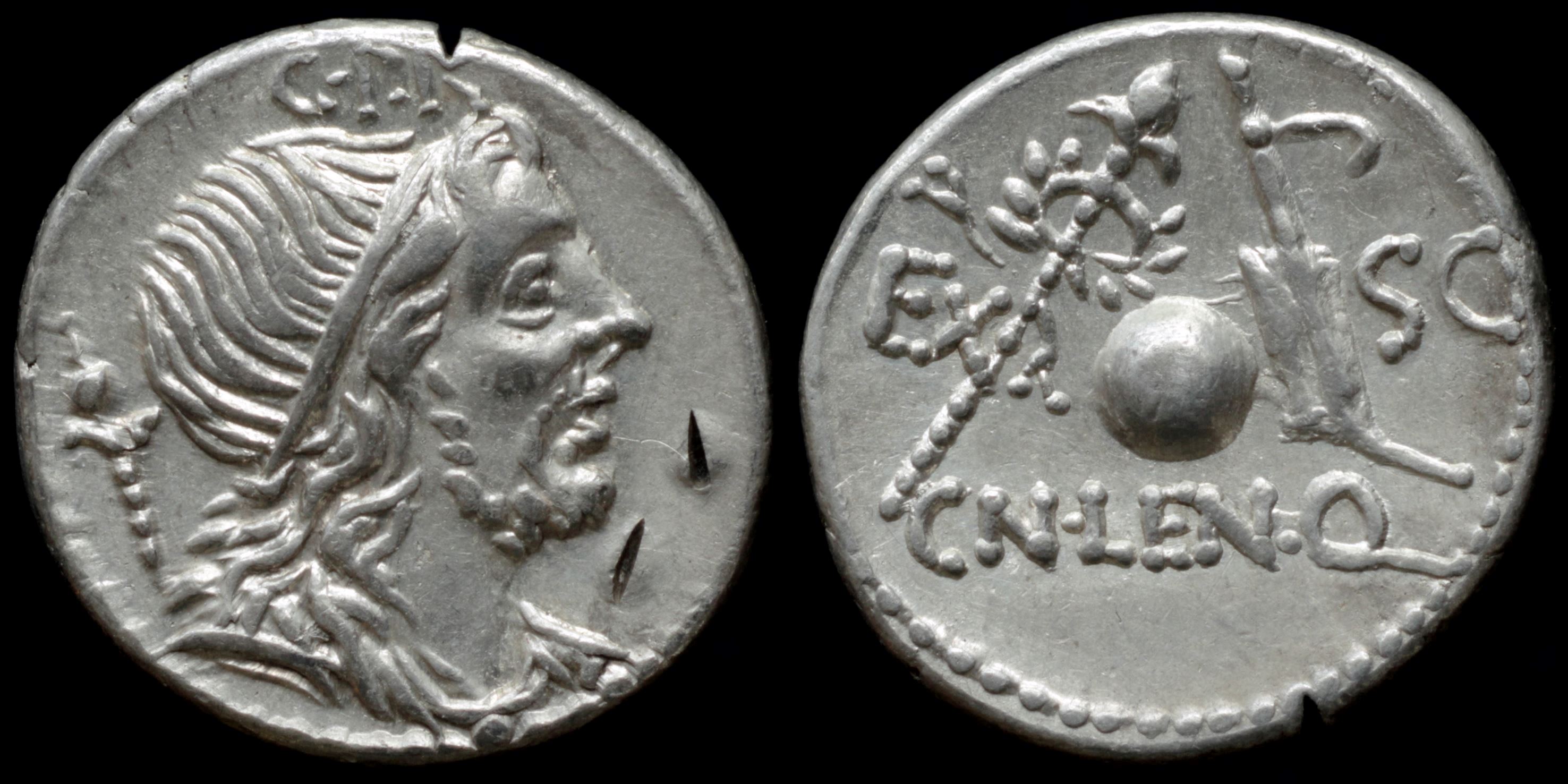
Reverse: wreathed scepter, globe, rudder, EX S·C / CN·LEN·Q
Die Orientation: -
Weight: 3.9 g
mint in Spain. Moneyer struck this coin as questor of proconsul Pompey when he was sent to support Q. Caecilius Metellus Pius in lenghty war against Sertorius in Spain. Moneyer became consul in 56 BC.
Probably struck in late 75 BD in Taras or Brundisium, perhaps the fund of choice to pay local shipping contractors to ferry armies across the Adriatic and back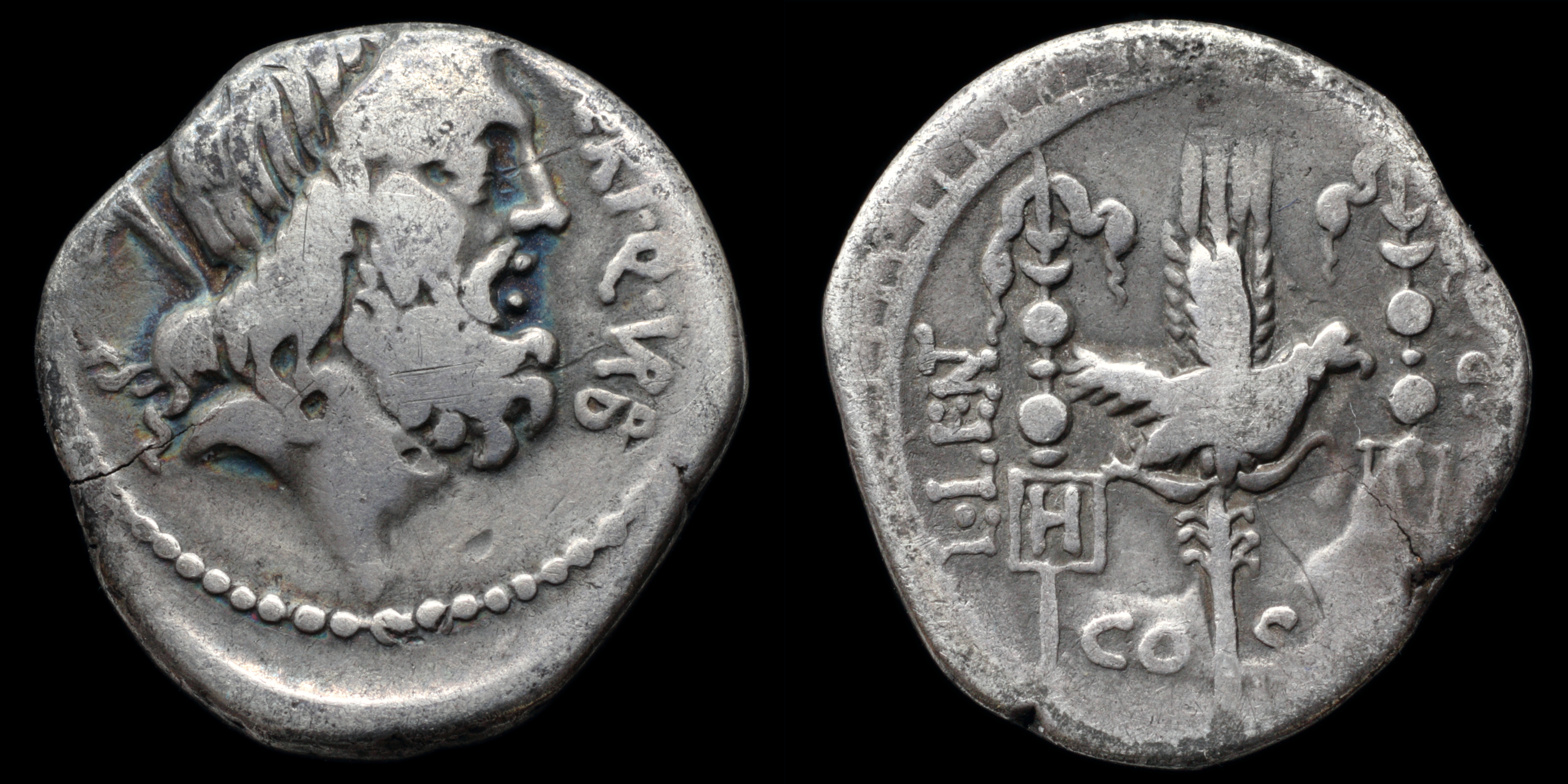
Reverse: aquila between signum of Hastati and signum of Princeps; L·LE(NT) // C·(MA)RC // H__P / COS
Die Orientation: -
Weight: 3.6 g
_4(0).jpg)
Reverse: Emblems of the pontificate: simpulum, aspergillum, securis (surmounted by wolf's head), and apex
Die Orientation: 10 H
Weight: 4.12 g
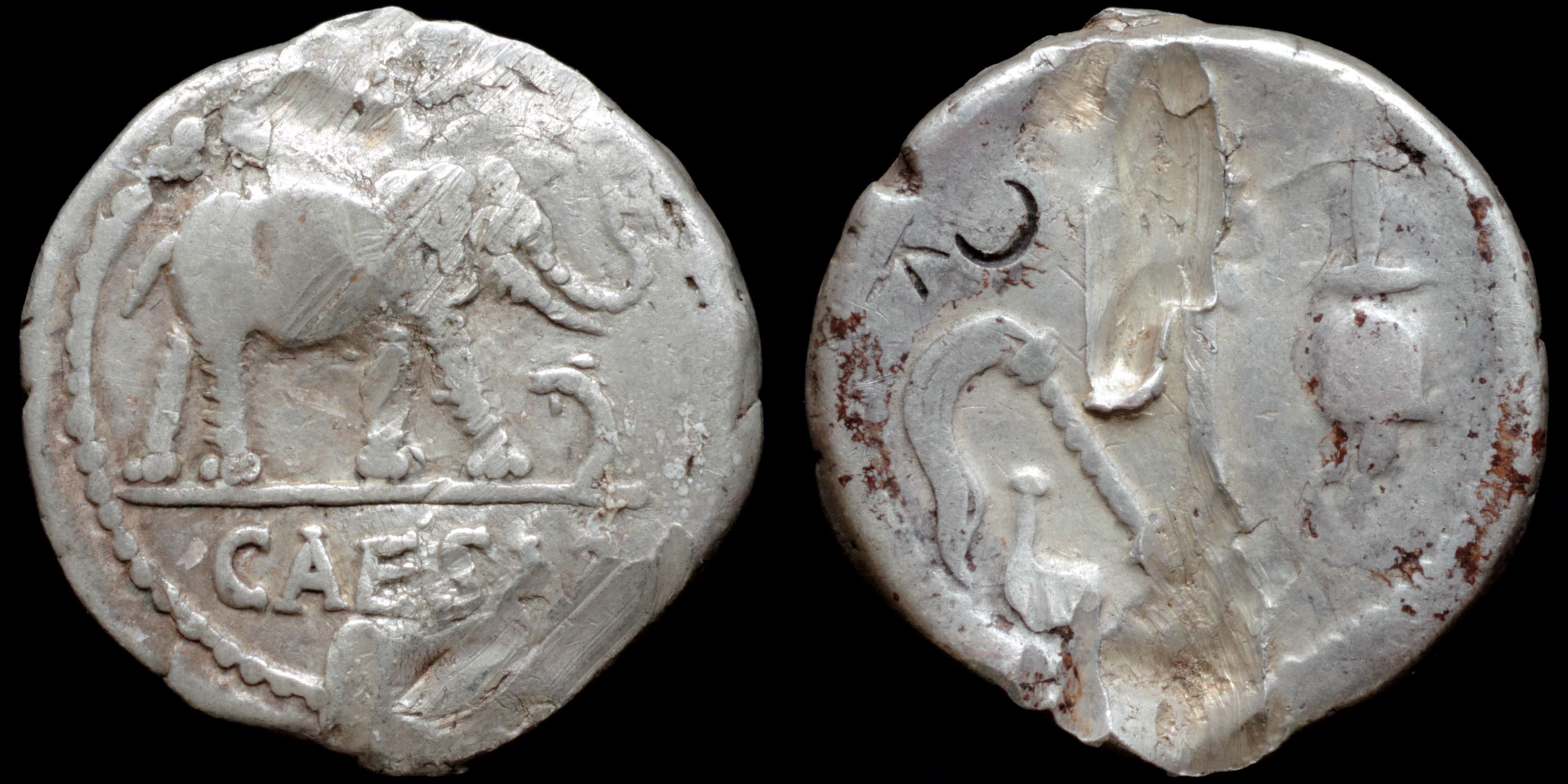
Reverse: sacrificial implements - simpulum (laddle), sprinkler, axe, apex (priest's hat)
Die Orientation: -
Weight: 4 g
moving mint (Cisalpine Gaul or Hispania). Oldschool interpretation of iconography is that elephant symbolize powerful Caesar and snake his enemies but this view must be revised. According to Harlan the Caesar's issue is reaction to the Acilius' with Salus holding snake which was in fact struck in 50 BC. Salus with snake represent health of the Republic. "Dio Cassius made it clear that the most vehement enemy of Caesar in the Senate debates of 50 was Quintus Caecilius Metellus Pius Scipio who put forward the motion that Caesar be declared a public enemy if he did not disband his troops. Caesar said that the Senate was intimated by threats from Pompey’s friends and reluctantly adopted Scipio’s proposal. Caesar put much of the blame for the civil war on Scipio who had become Pompey’s father-in-law in 52 and had shared the consulship with Pompey that year. Recounting the reasons for the civil war, Caesar was careful to avoid blaming Pompey directly and he claimed that Pompey had been led astray and corrupted (depravatum) by Caesar’s enemies who were jealous of his glory, while he himself had always promoted Pompey’s honor and dignity. …….. With a very clever, yet simple, turn on the Pompeian propaganda of Acilius’ coin, the snake has been taken from the hands of Valetudo and trampled by the Metellan elephant. Caesar showed Rome that Metellus Scipio and his supporters were the true threat to the health and safety of the Republic, the true cause of the civil war." Sacrificial implements reminds Caesar as Pontifex Maximus.
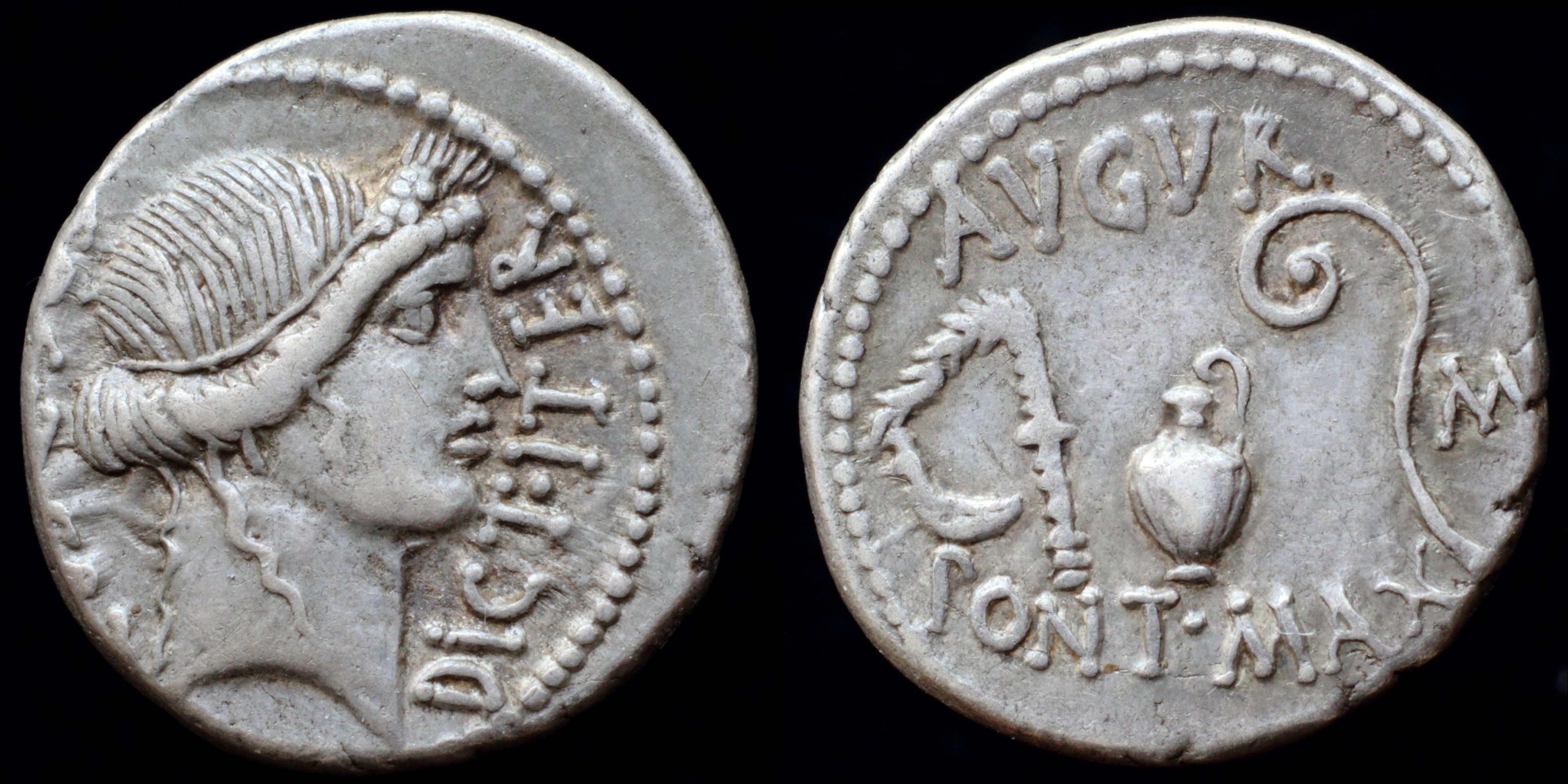
Reverse: sacrificial implements: simpulum, aspergillum, capis (jug), lituus, AVGVR / PONT·MAX / M
Die Orientation: -
Weight: 3.7 g
moving mint (Africa or Sicily). Ceres symbolizes Africa as granary of Rome. M on reverse means munus - payment for soldier's service. These coins probably served to pay Caesar's veterans after battle of Thapsus.

Reverse: Emblems of the pontificate: simpulum, aspergillum, securis (surmounted by wolf's head), and apex.
Die Orientation: 7 H
Weight: 3.82 g
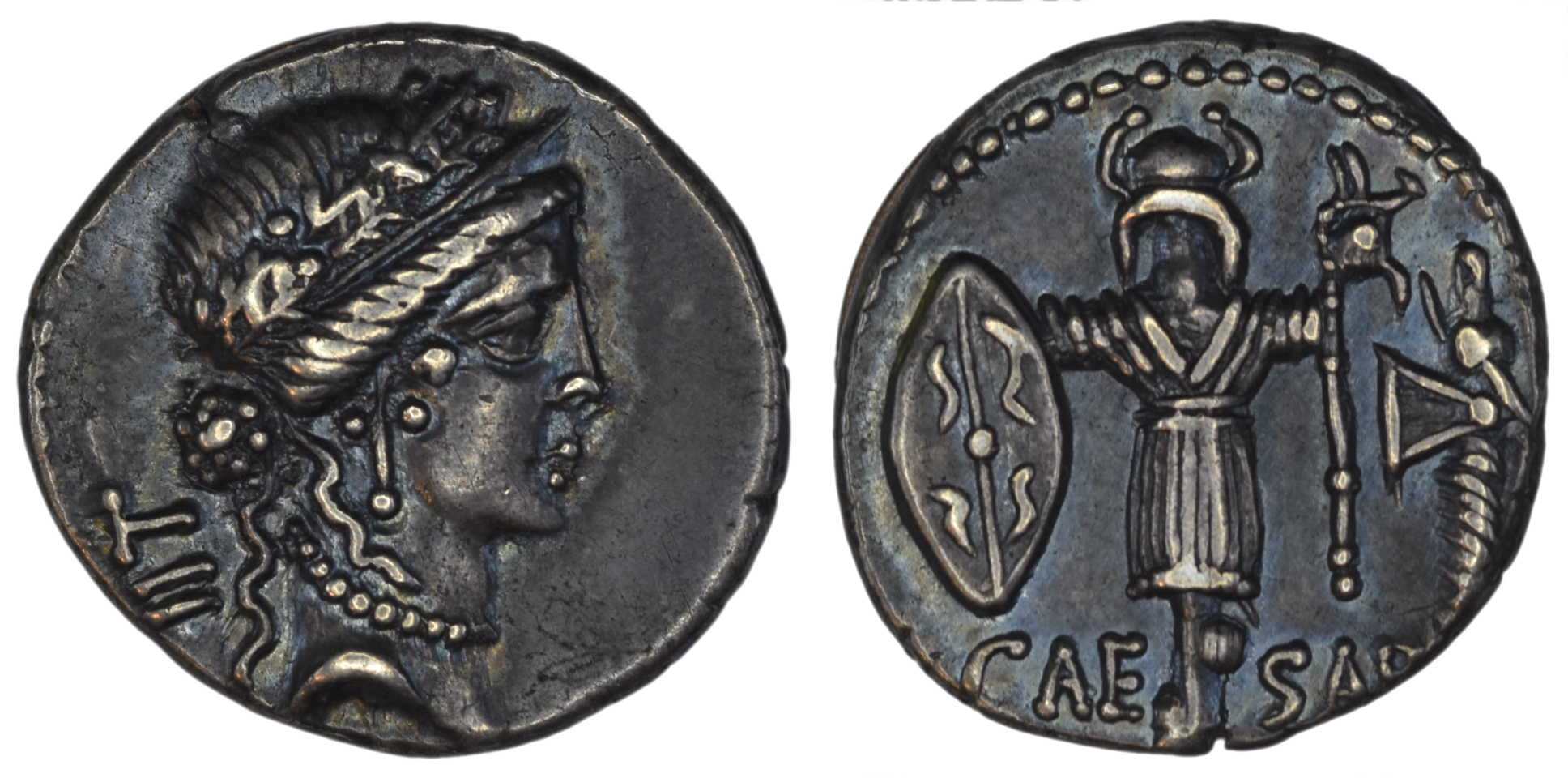
Reverse: Trophy of Gallic arms; axe surmounted by an animal's head to right; CAESAR below
Die Orientation: -
Weight: 3.98 g
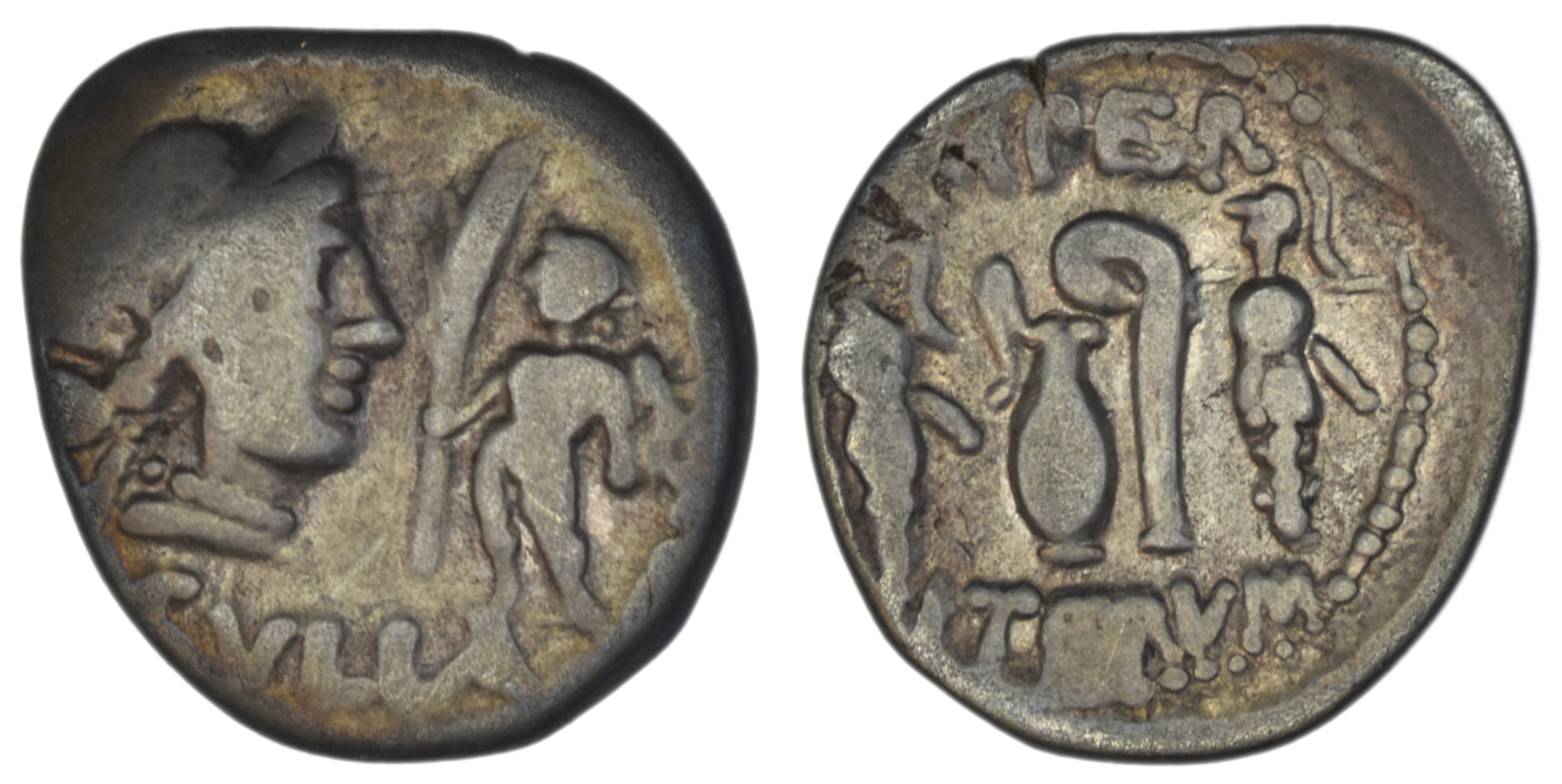
Reverse: IMPER ITERVM - Jug and Lituus between two trophies
Die Orientation: -
Weight: 3.24 g
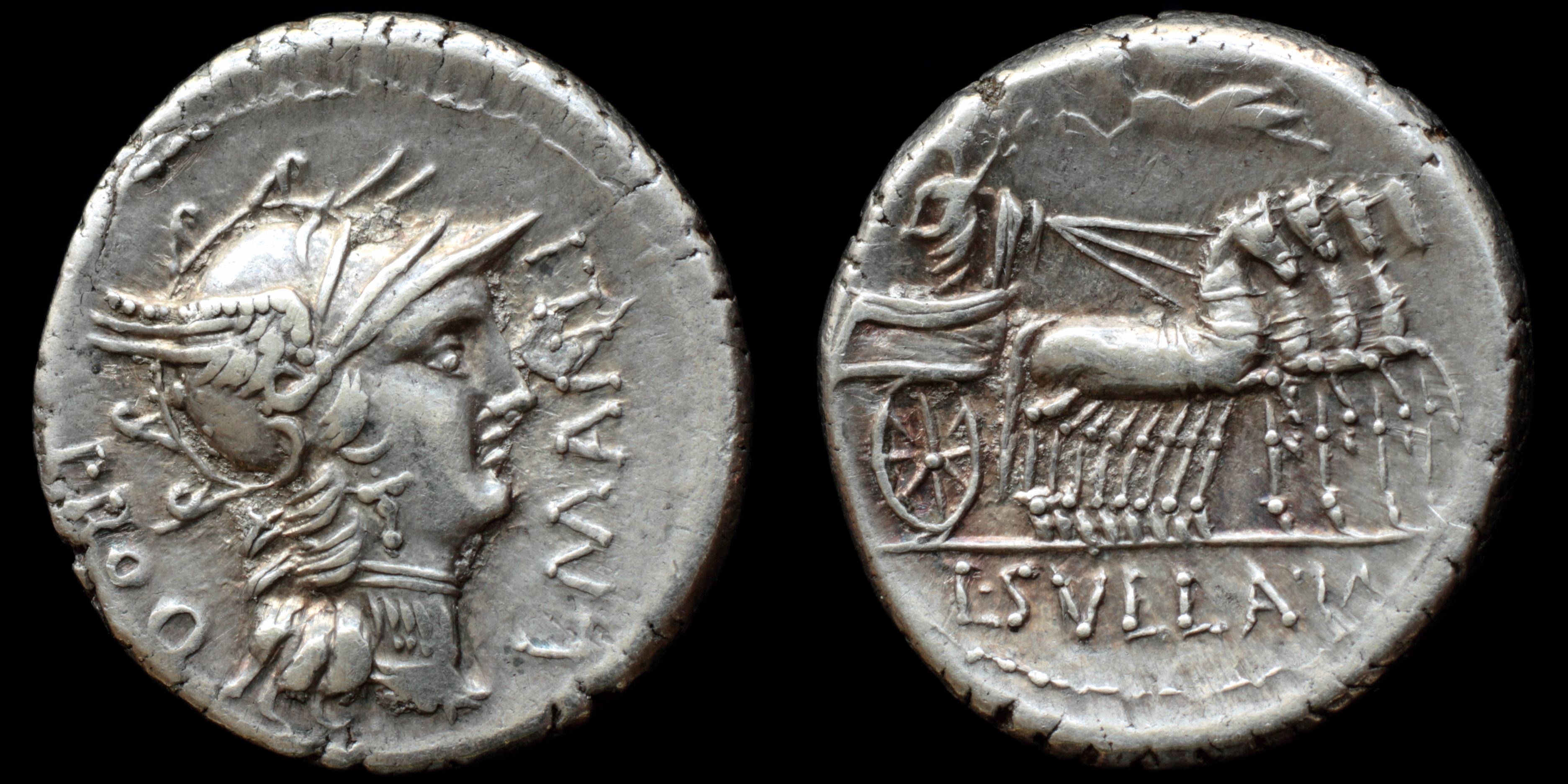
Reverse: Sulla right in quadriga holding caduceus and reins, Victory flying right holding wreath L·SVLLA·IM
Die Orientation: -
Weight: 3.9 g
mint in south Italy. Reverse depicts Sulla's upcoming triumph which was held on 29-30 Janury 81 BC.
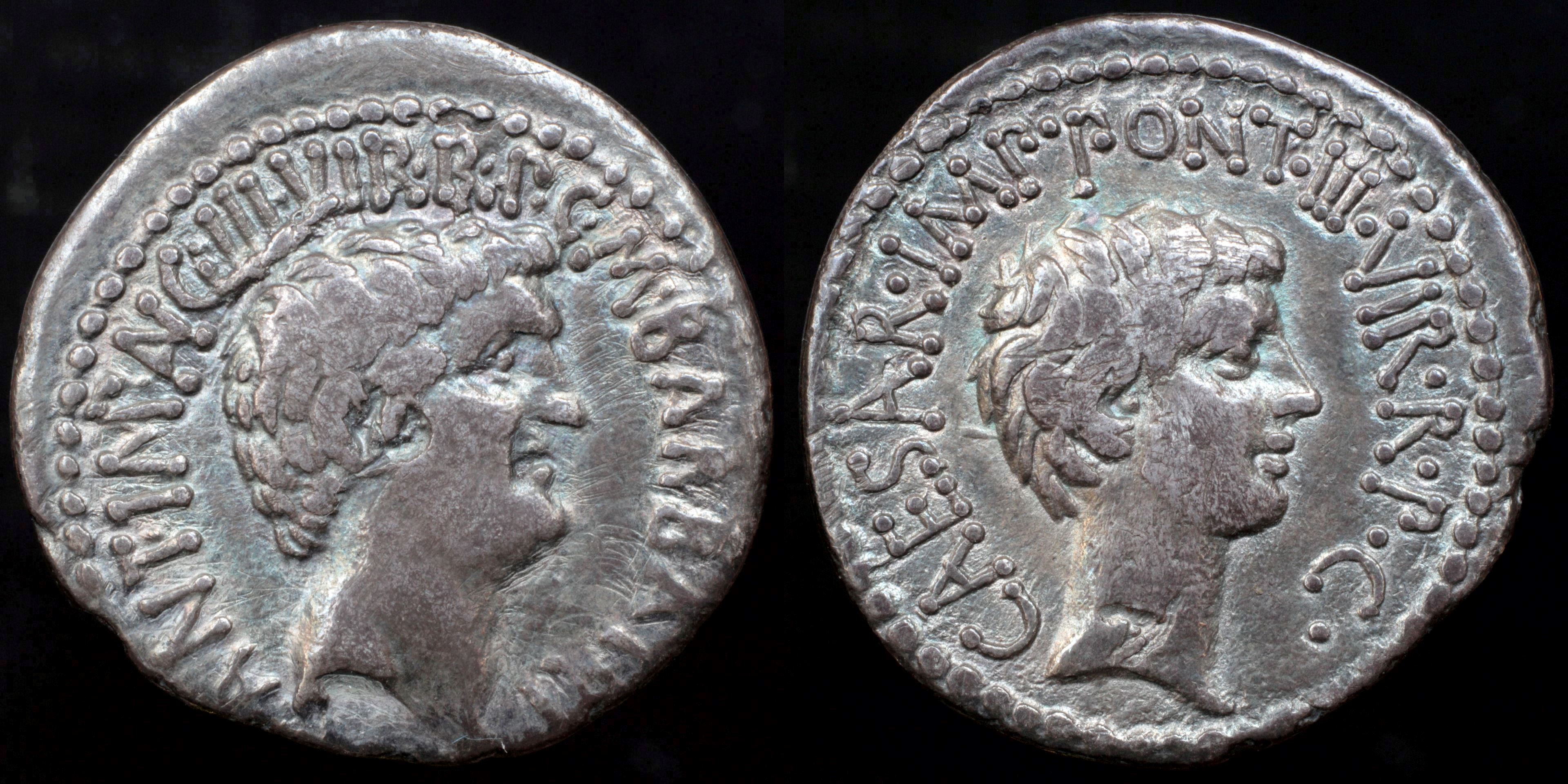
Reverse: head of Octavian Caesar right, CAESAR·IMP·PONT·III·VIR·R·P·C·
Die Orientation: -
Weight: 3.3 g
Mark Antony, Octavian Caesar, struck in Ephesus? from spring to early summer 41 BC. Moneyer held unusual office quaestor pro praetore in the east in 41-40 BC. He accompanie Mark Antony after the battle of Philippi. He was probably also Curule Aedile. He restored aedicula shrine on the Forum Romanum and fountain of goddess Juturna (Lacus Iuturnae).
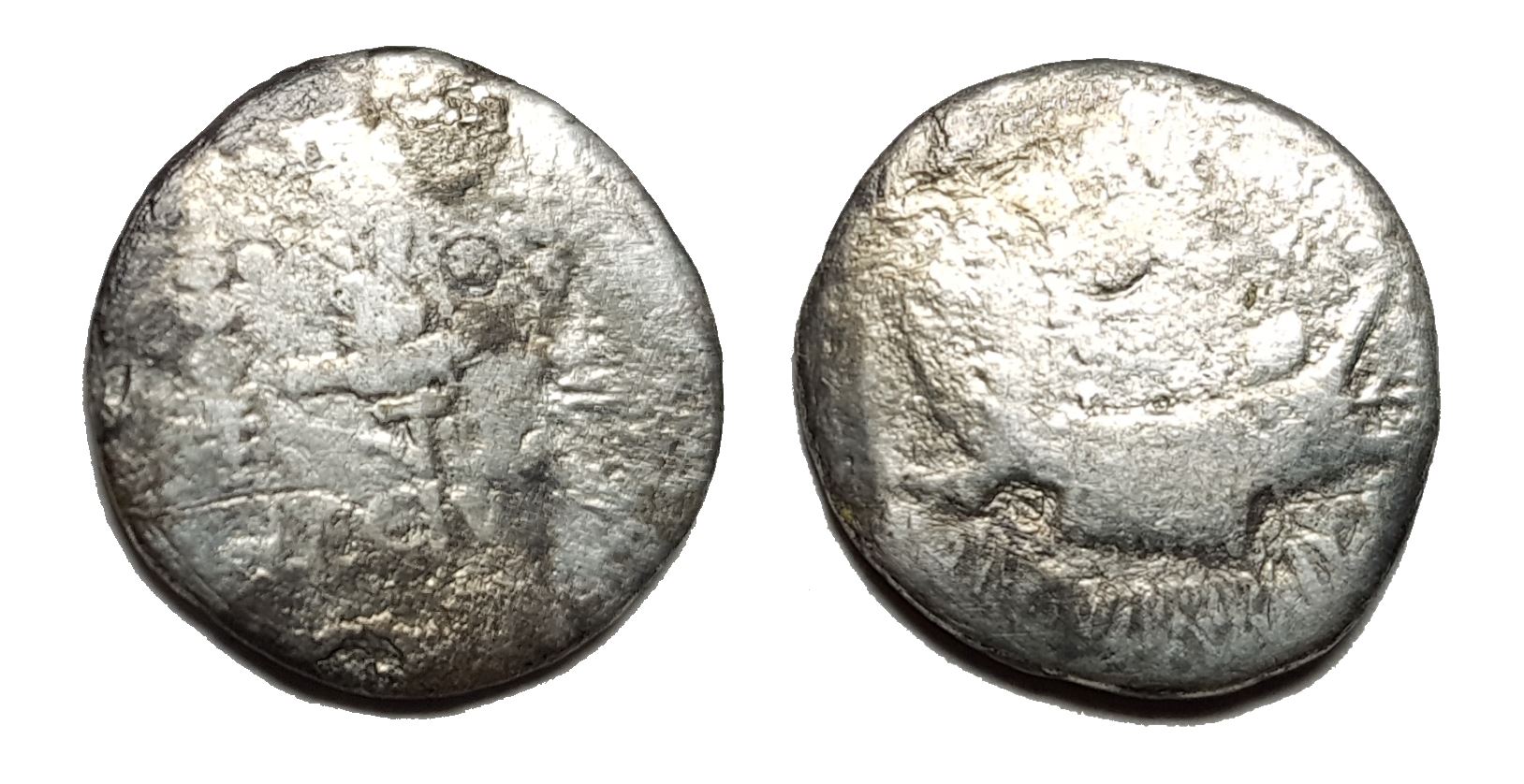
Reverse: LEG V
Die Orientation: -
Weight: 2.73 g
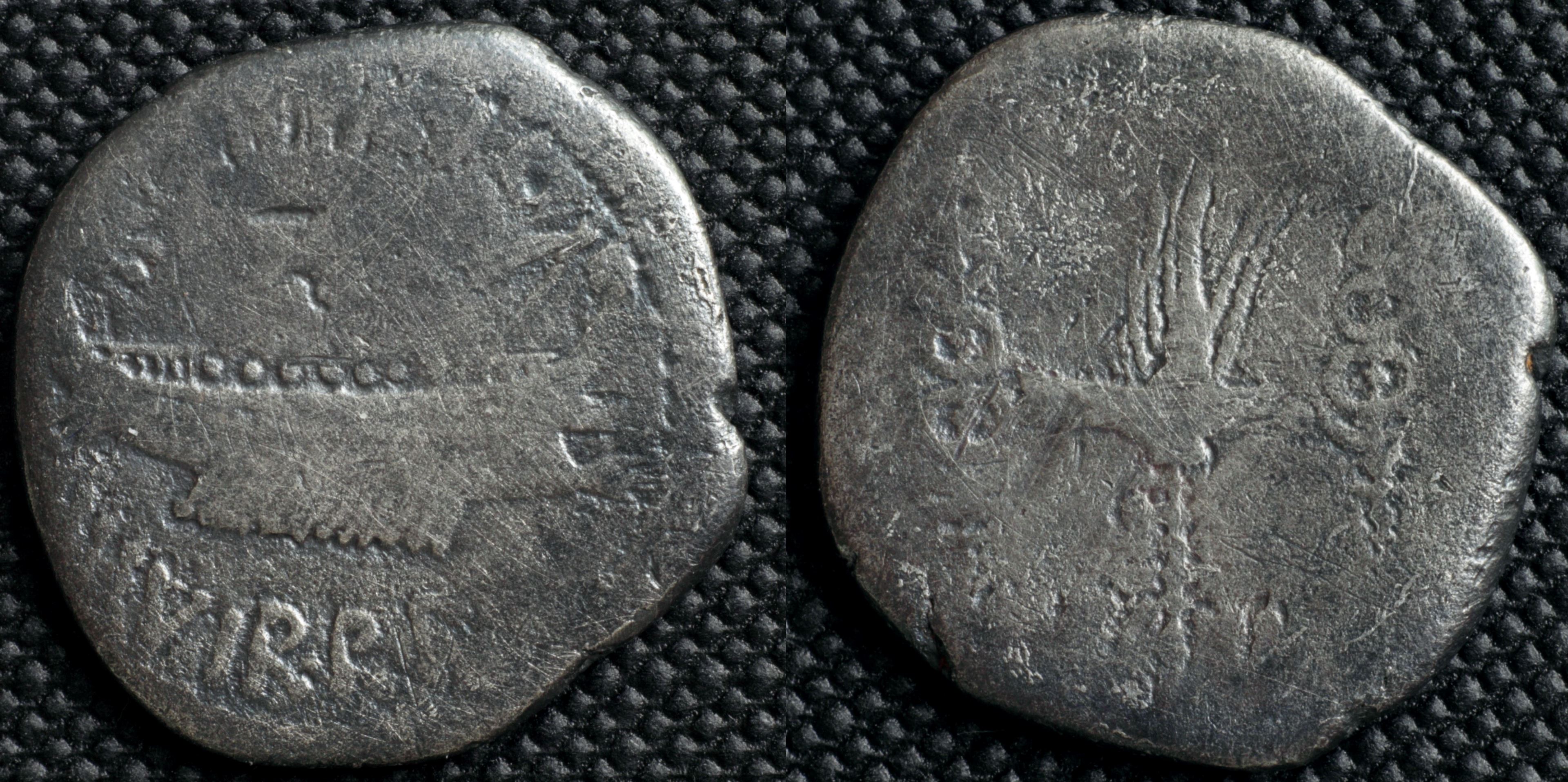
Reverse: legionary aquila between two standards, LEG X?
Die Orientation: -
Weight: 3 g
moving mint in Greece (maybe Patrae?)
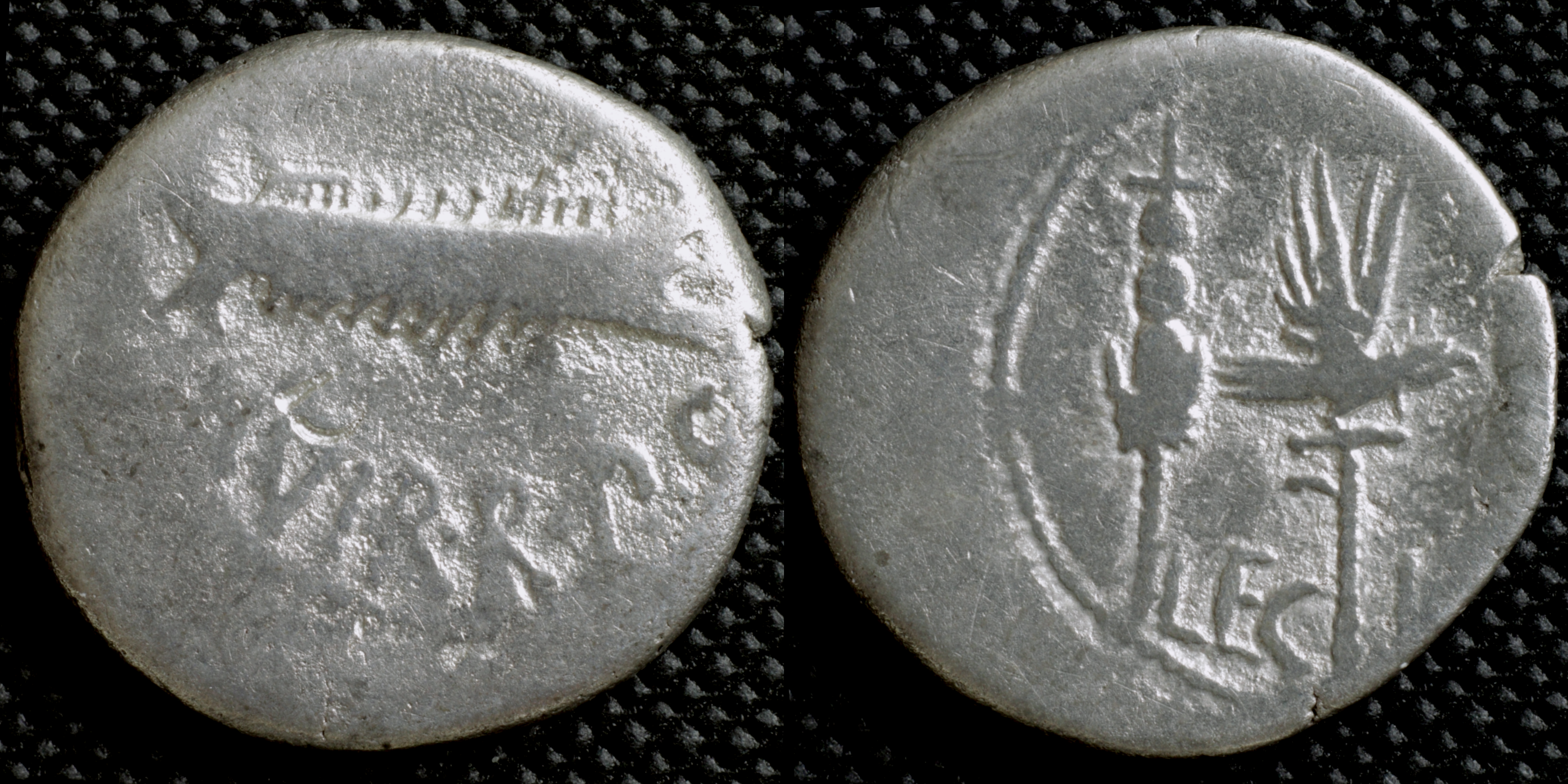
Reverse: legionary aquila between two standards, LEG_II ?
Die Orientation: -
Weight: 3.6 g
moving mint in Greece (maybe Patrae?)
.jpg)
Reverse: Aquila (eagle) between two standards; around, LEG XVII CLASSICAE
Die Orientation: -
Weight: 3.27 g
Quality VF-F
.jpg)
Reverse: LEG V; Legionary eagle between two standards
Die Orientation: 6 H
Weight: 3.7 g
.png)
Reverse: Soldier(or Mars?), nude to waist, standing facing, helmeted head turned right, holding lance with his right hand, sword in his lowered left hand; on left, four shields attached to a tree, on right, forepart of bull reclining right, in exergue, IIIV.
Die Orientation: -
Weight: 3.72 g
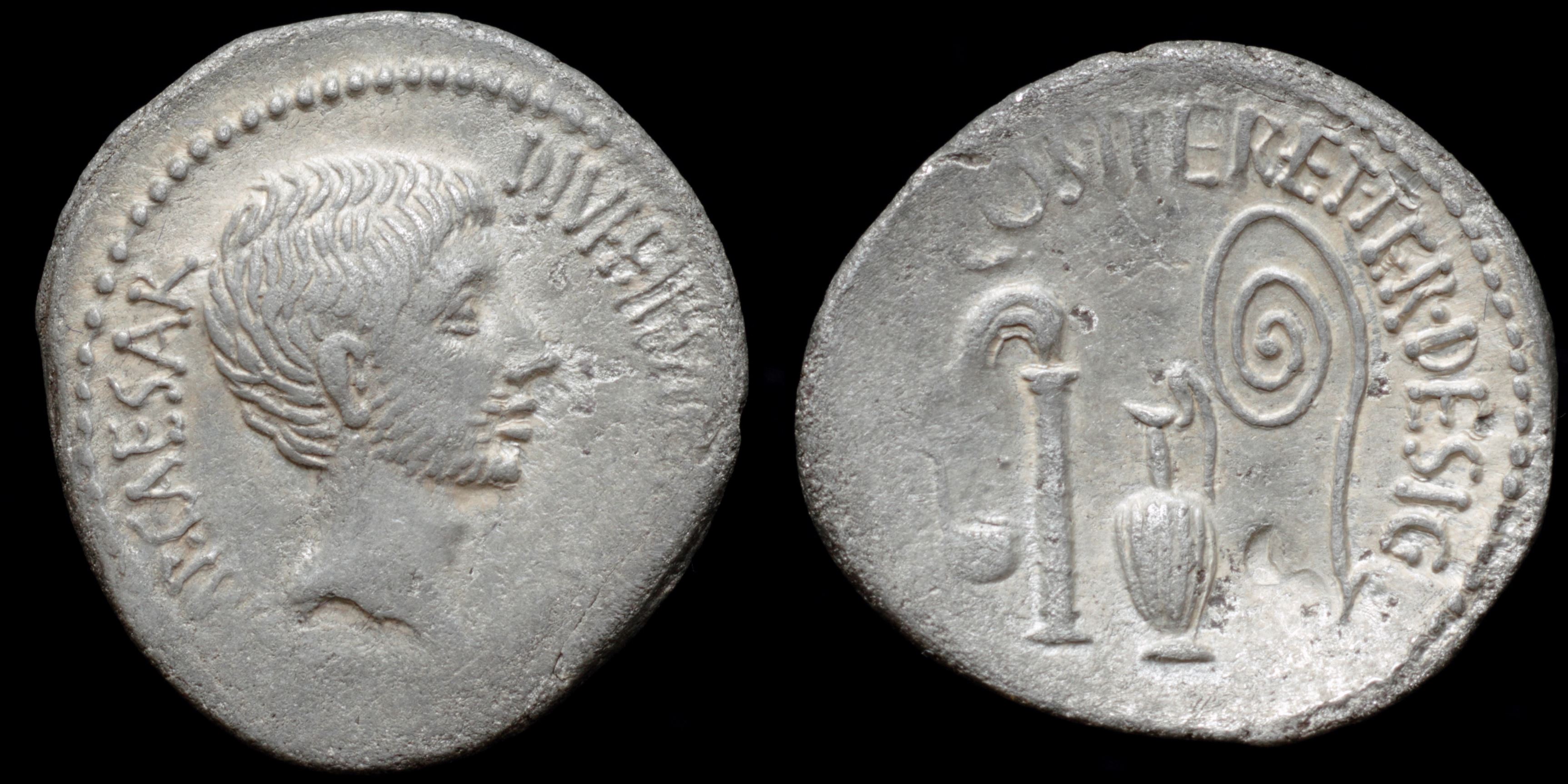
Reverse: sacrificial implements: simpulum (ladle), aspergillum (sprinker), ewer (jug), lituus (augural wand), COS·ITER·ET·TER·DESIG
Die Orientation: -
Weight: 3.5 g
.jpg)
Reverse: Equestrian statue with Octavian, facing left; S·C in exergue
Die Orientation: 6 H
Weight: 3.25 g
"This is a favourite type coin for me as it is the first appearance of Octavian on a coin. Very often found in low grade, it is nonetheless a very historically important coin. It’s a great piece of history at a low price! Here you see a young Octavian for the first time on the obverse. The reverse shows the equestrian statue that he demanded the senate build for him after putting down the siege at Mutina. It is a brazen display of Octavian’s contempt for the senate."
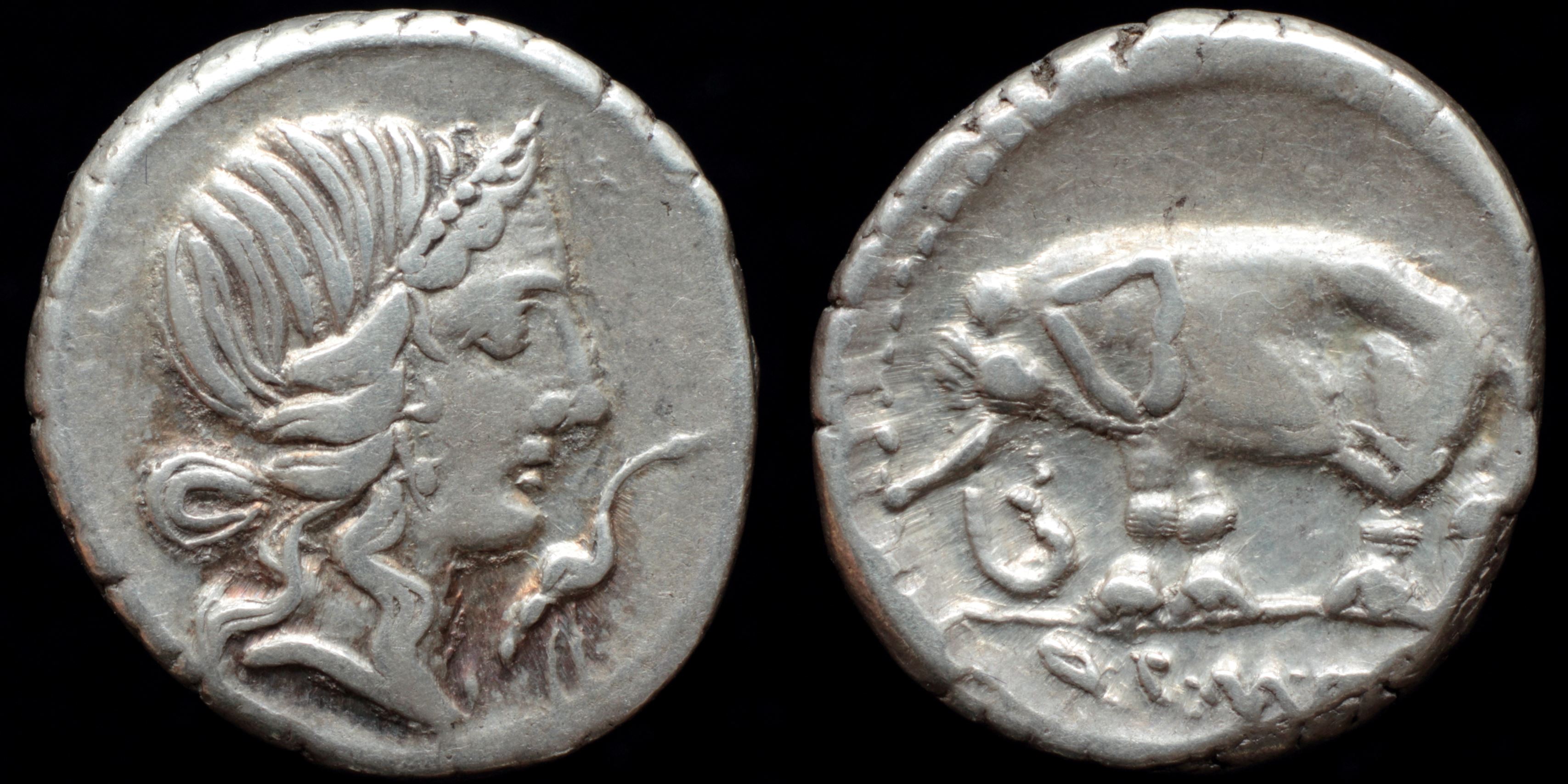
Reverse: elephant left, bell hanging from its neck Q·C·M·P·I
Die Orientation: -
Weight: 3.9 g
mint in north Italy. Elephant commemorates victory of moneyer's ancestor L. Caecilius Metellus over Hastrubal in the first Punic war 251 BC near Palermo. Seized elephants appeared in his triumph and became the emblem of the family. Moneyer received agnomen Pius in 99 BC for his effort to return his father from exile. Stork is the symbol of Pietas. Moneyer struck these coins as Imperator in the northern Italy where he fought along with Sulla. They held consularship together in 80 BC.
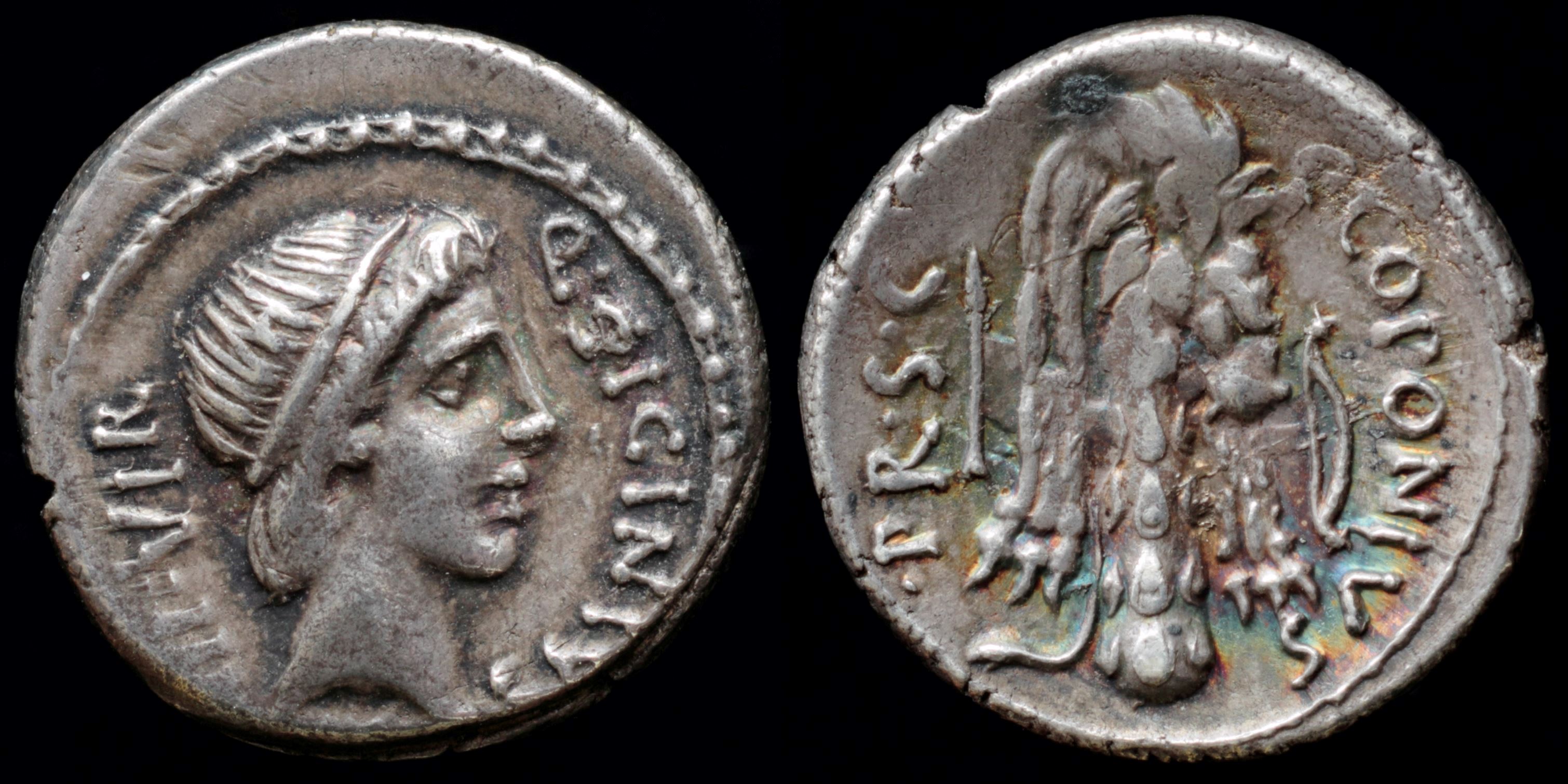
Reverse: Nemean lion's skin draped over club; arrow left; bow right, C·COPONIVS ·PR·S·C
Die Orientation: -
Weight: 3.9 g
Pompey's moving mint (Greece). Issue was probably used to pay Pompey soldiers. It mentions S·C in legend in order to pretend to be the official issue authorized by senate. Q. Sicinus struck these coins in exile in the east when he retreated with Pompey from Italy before Ceasar's invasion. Praetor C. Coponius was commander of Pompey's fleet in the easter Mediterranien. Star below Apollo may represent a comet which occured in 49 BC.
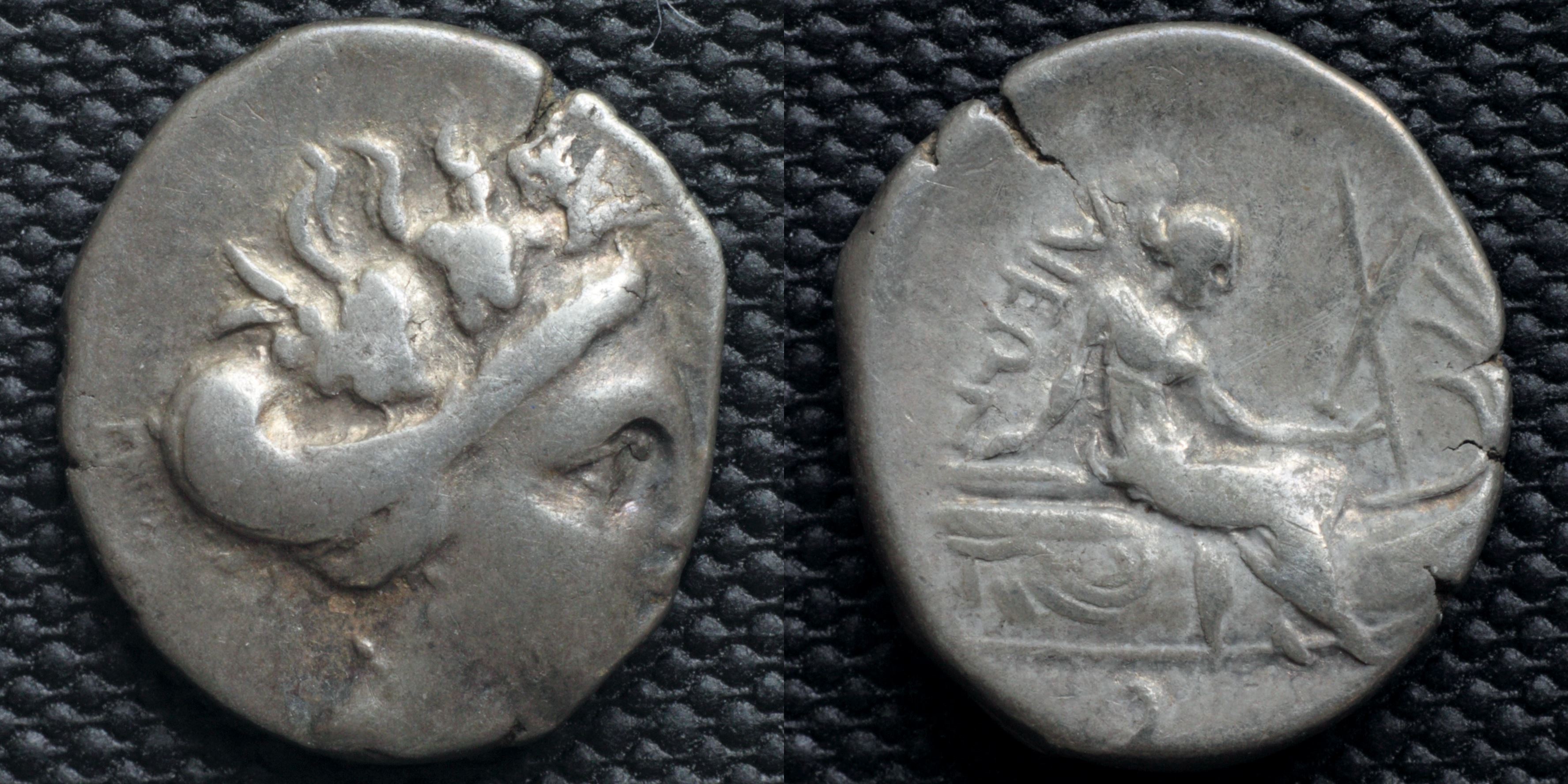
Reverse: nymph Histiaia seated right on stern of galley, holding stylis; ornate apluster; IΣTI_AIEΩN, crescent below
Die Orientation: -
Weight: 1.74 g
